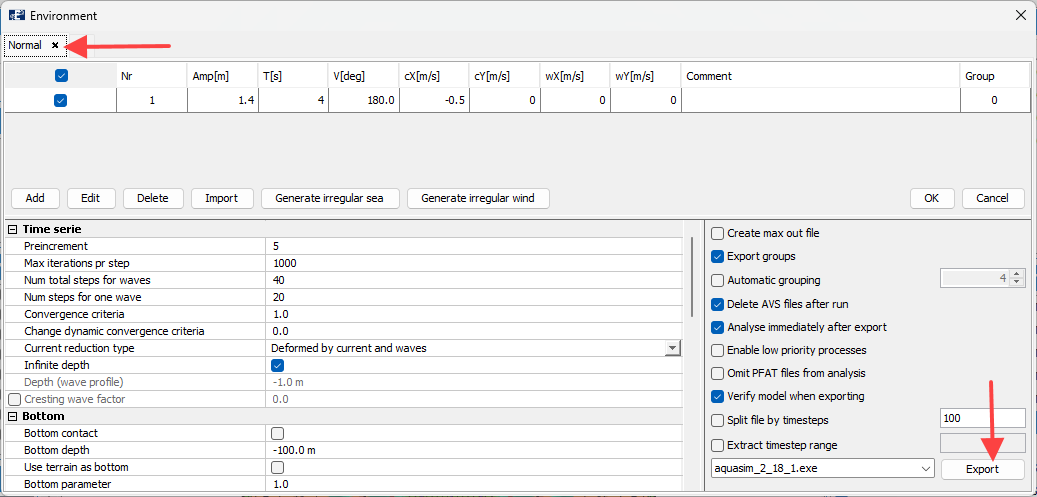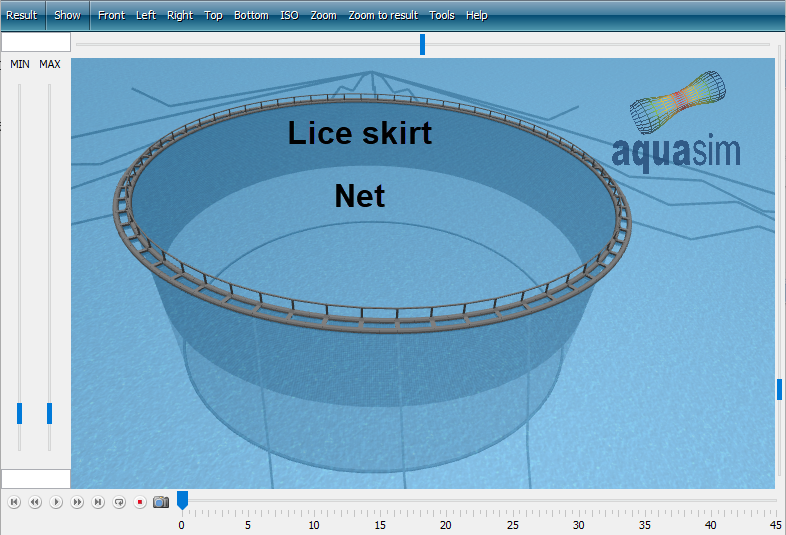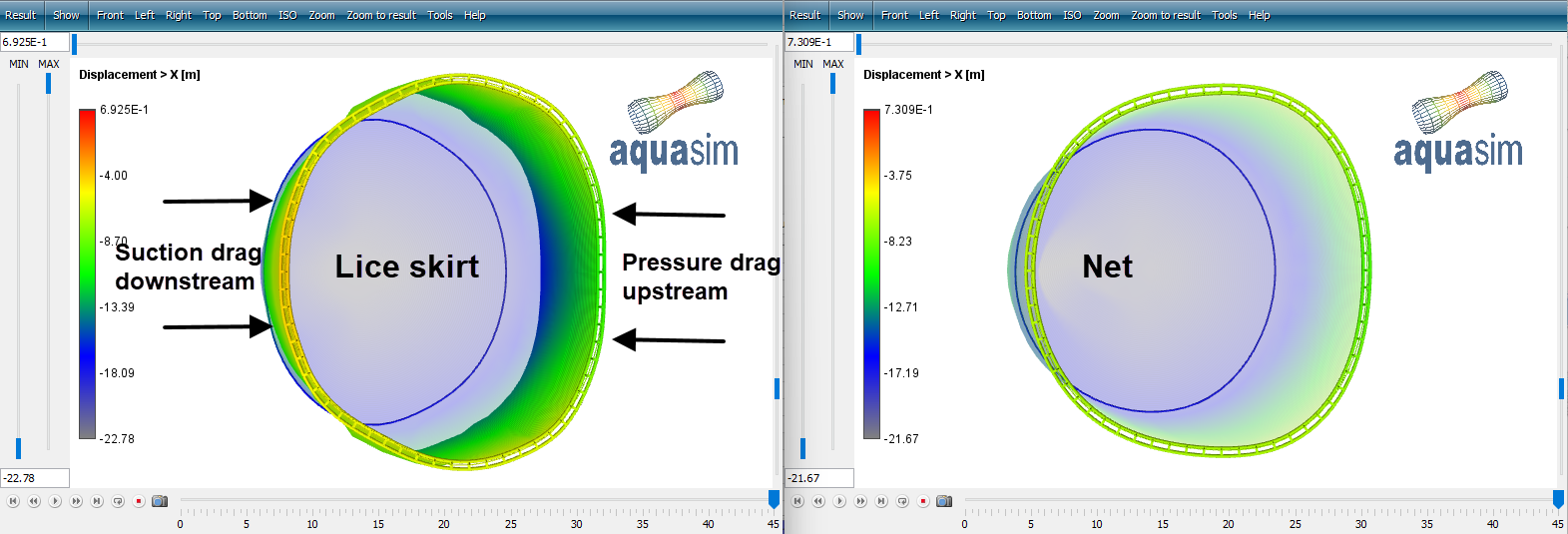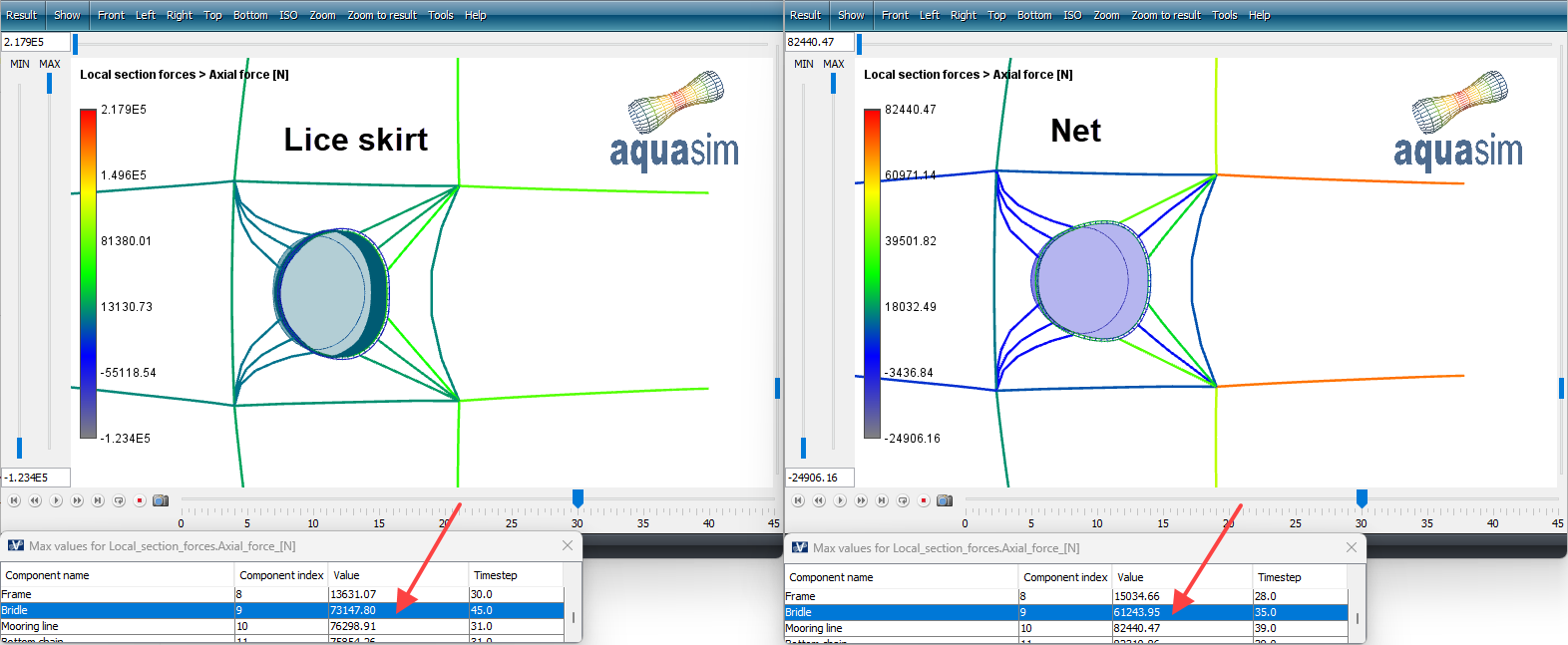Analysis and Post processing
Last reviewed version: 2.19Analysis
Now that you are introduced to the different parameters and what they mean, we should run an analysis and then have a look at key result parameters in AquaView.
A load condition is prepared, go the Export and the tab Normal. A wave amplitude of 1.4 meters and -period of 4 seconds is applied. Also, current along x-direction is used.

Export the model and start the analysis. This analysis will take 3-5 minutes to complete, depending on your computer capabilities. We named the analysis liceskirt_.
Post processing
Load the result-file, the one that ends with .avz. If you have not run your own analysis, you may open the liceskirt_01.avz that is associated with this tutorial.
Impermeable nets, such as lice skirts are in AquaView viewed as a membrane but with a darker rendering.

When you apply Lice skirt in your model, some additional results are available in AquaView. They are found under Result > Impermeable net. Here you can view different forces that is relevant for impermeable nets, for example damping. Select Result > Impermeable net > Mass normal per m2 [m3]. This is the amount of water normal to the inside of the lice skirt that is accelerated due to motions. These result-options are useful for self-validation of your model. Meaning that you can check these parameters with respect to input and what seems logic.

Comparison models with and without lice skirt
One interesting point is to investigate the effect the lice skirt has on response of the aquaculture cage and force distribution in the anchor lines. In this section we shall present and illustrate the effect lice skirt has.
Load the AquaSim model Net.amodel. This model is identical to LiceSkirt.amodel, only that the load formulation of the lice skirt is changed from Lice skirt to Normal. This will result in a conventional net that is permeable.

Select Export and the tab Normal. If you compare the two models, you may see that the load conditions are identical. With a wave amplitude of 1.4 meters, period 4 seconds and current along x-axis 0.5m/s.

Export the model and run an analysis. We named the analysis net_, and will result in an avz-file that is named net_01.avz. When the analysis is finished, open this file. You may have the liceskirt_01.avz and net_01.avz open parallel to compare more easily.
Response and deformations
The two models are presented side-by-side in the figure below.

You can see that the model with the lice skirt has slightly more deformed shape upstream compared with the model without the lice skirt. This is due to the fluid particles are not able to flow through the impermeable lice skirt, and induces larger pressure drag upstream. At the same time, a larger suction drag is induced downstream – leading the floating collar to be pushed towards the centre of the circle that forms the lice skirt.
You may also see that the response of the floating collar is somewhat slower and more rigid in the case with the lice skirt. This is due to the trapped water inside the lice skirt – but also the water on the outside – that has to be accelerated in order for the floating collar to displace.

Forces in the floating collar and anchor system
Comparing von Mises stress in the floating collar, one can clearly see in the figure below that the introduction of a lice skirt has increased the load on this construction part.

The same apply for the axial force in the bridles. It is important to have that in mind when planning for an anchor system.
